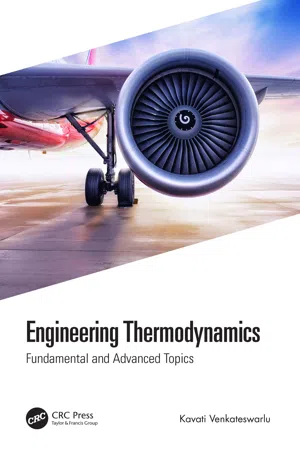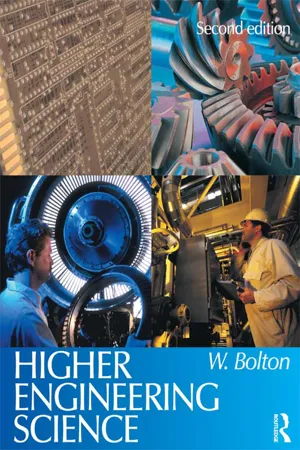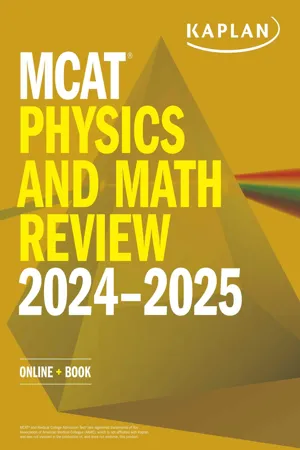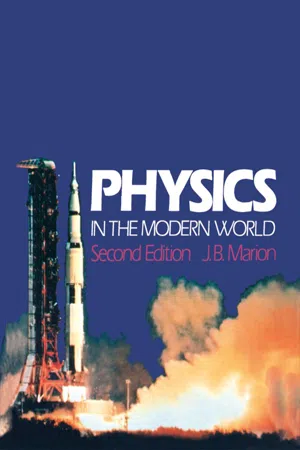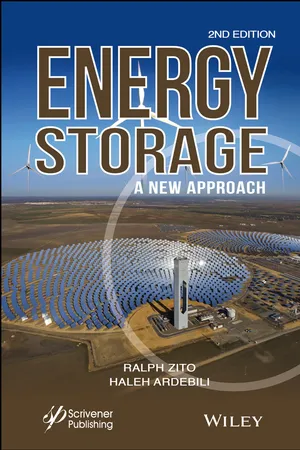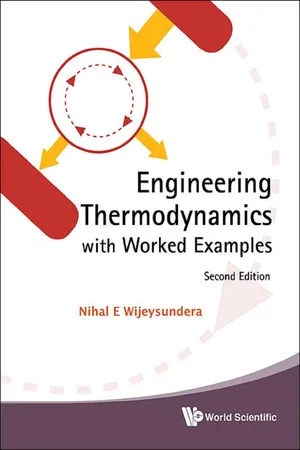Physics
Work Energy Principle
The work-energy principle states that the work done on an object is equal to the change in its kinetic energy. This principle provides a useful way to analyze the motion of objects and understand the relationship between work, energy, and motion. It allows for the calculation of kinetic energy and work based on the forces acting on an object.
Written by Perlego with AI-assistance
Related key terms
Related key terms
1 of 4
Related key terms
1 of 3
12 Key excerpts on "Work Energy Principle"
- eBook - ePub
- A. L. Stanford, J. M. Tanner(Authors)
- 2014(Publication Date)
- Academic Press(Publisher)
This chapter introduces one of the most important and perhaps the most far-reaching of all principles in the sciences—the conservation of energy. A conservation principle is a rule or a natural law that specifies that the value of a physical quantity does not change during the course of a physical process but remains constant. The quantity that does not change is said to be conserved. The simplicity of conservation principles makes them concise expressions of natural law and powerful tools of scientific analysis. Conservation of energy is only one of a number of conservation principles that students of science or engineering will encounter. The significance and the usefulness of these principles should become apparent to the student as they are used to analyze and interpret physical phenomena.Of course, we have not yet defined energy. This chapter will introduce several physical quantities and concepts that are necessary for the understanding of energy and its associated conservation principle. First we will define work and describe how it may be accomplished and calculated. Then we will briefly consider power, a quantity that is useful in many practical applications. Next we will encounter energy in its mechanical forms, namely, kinetic and potential energies, and see how these quantities are related to work. Finally, we will see how kinetic and potential energies are used to express the conservation of energy principle, the essential physical relationship of this chapter.5.1 Work
In the nonscientific world, work is often thought of in terms of some physical or mental effort. In physics, however, the term work is defined precisely. Doing work requires the use of force, and work on a body does not take place without displacement of that body. We will begin with a simple situation in which work occurs: work done by a constant force.Work by a Constant Force
Suppose a constant force F is applied to a particle that moves in a straight line, say along the x axis from x 1 to x 2 through a displacement of Δr = (x 2 – x 1 )î Δx î. The work done by the force F on the particle is defined to be the product of the magnitude of the displacement and the magnitude of that component of the force that is in the direction of the displacement. In Figure 5.1 the force F is applied to a particle at an angle θ measured from the x axis. As the particle is displaced by Δr = Δx î, the vector component of force in the direction of the displacement isFxî. Then the work W done by the force F on the particle in displacing it by Δr = Δx - eBook - ePub
Engineering Thermodynamics
Fundamental and Advanced Topics
- Kavati Venkateswarlu(Author)
- 2020(Publication Date)
- CRC Press(Publisher)
In engineering thermodynamics, the focus will be on work-producing devices such as internal combustion engines and turbines. Hence, it is always suitable to consider such work as positive. That is, the work done by the system is positive, and the work done on the system is negative. In certain cases, however, it is convenient to regard the work done on the system to be positive. To reduce the possibility of misunderstanding in any such case, the direction of energy transfer is shown by an arrow on a sketch of the system, and work is regarded as positive in the direction of the arrow. It is necessary to know how the force varies with the displacement. This brings out an important idea about work.3.8 First Law of Thermodynamics
The first law of thermodynamics (conservation of energy principle) establishes the relationships among the various forms of energy and energy interactions such as heat Q and work W during a process. The first law of thermodynamics states that energy is neither created nor destroyed during a process; it gets transformed from one form to the other. When an electrical energy is supplied to a motor, it will rotate a pump circulating the fluid. In this case, electrical energy is converted to kinetic energy (rotation of the shaft). A speeding vehicle possesses kinetic energy, if the brake is applied it comes to rest slowly and at rest, it possesses potential energy. The loss in kinetic energy equals the increase in potential energy when the air resistance is negligible, thus confirming the conservation of energy principle for mechanical energy.The conservation of energy principle can be demonstrated with the help of the processes that involve either heat or work interactions or simultaneous heat and work interactions as well. In one case, we consider a process that involves heat transfer but no work interactions such as heating of a metal bar in a furnace. Owing to heat transfer to the metal bar, its energy increases. The increase in the total energy of the metal bar will be equal to the amount of heat transferred to it. Similarly, in the case of heating of water in a steam boiler, if 100 kJ of heat is transferred to the water from the furnace and 10 kJ of it is lost from the water to the ambient surroundings, the increase in energy of the water becomes equal to the net heat transfer to water, i.e., 90 kJ. - eBook - ePub
- William Bolton(Author)
- 2012(Publication Date)
- Routledge(Publisher)
5 Energy transfer5.1 IntroductionThis chapter is concerned with the energy transfers that can occur with mechanical systems. Energy can be transferred from one form to another by work being done or by heat transfer. Here we restrict the discussion to transfers involving work. There are many forms that energy can take and in this chapter potential energy, linear and angular kinetic energy and strain energy are discussed and the principles applied to the solution of mechanical system problems.5.1.1 Conservation of energyThere is a basic principle that is used in all discussions of energy and that is that energy is never lost, it is only transformed from one form to another or transferred from one object to another. This is the principle of the conservation of energy. In any process we never increase the total amount of energy, all we do is transform it from one form to another.5.2 WorkThe principle of the conservation of energy is that energy is never created or lost but only converted from one form to another. In all such conversions, the total amount of energy remains constant.Work is said to be done when the energy transfer takes place as a result of a force pushing something through a distance (Figure 5.1 ), the amount of energy transferred W being the product of the force F and the displacement s of the point of application of the force in the direction of the force.Figure 5.1 WorkWith force in newtons and distance in metres, the unit of work is the joule (J) with 1 J being 1 N m.Work done by a constant force W = Fs [1] Consider the work done by a force F when the resulting displacement s is at some angle 0 to the force (Figure 5.2 ). We can look at this in two equivalent ways. We can consider the displacement in the direction of the force F is s cos θ and so the work done is:work done = F × s cos θ [2] Figure 5.2 An oblique forceAlternatively, we can consider the force component acting in the direction of the displacement. The force can be resolved into two components, namely F cos θ in the direction of the displacement and F sin θ at right angles to it. There is no displacement in the direction of the F sin θ component and so it does no work. Hence the work done by the oblique force is solely due to the F cos θ - No longer available |Learn more
- Robert A. Pelcovits, Joshua Farkas(Authors)
- 2023(Publication Date)
- Barrons Educational Services(Publisher)
We have discussed qualitatively how the sign of work is related to the change in an object’s speed (forces that exert positive work increase speed, forces that exert negative work decrease speed, and forces that exert zero work do not affect speed). Now we would like to define this relationship mathematically. We start with the definition of work and integrate to obtain the total work:If the net force is not constant, we must first express the integrand in terms of one variable and its own differential (this is similar to separating variables when solving air resistance problems in the last chapter). In this case, the manipulations are a little more tricky:Rearranging, Now the right side is ready to integrate: It is composed of two integrands, each of which is defined by a different variable and its own differential.Given the definition of speed as , this can be rewritten asWe are thus led to define a new quantity, the kinetic energy:Definition of kinetic energySimilar to work and other forms of energy, kinetic energy has units of joules (J = N · m = kg · m2 /s2 ).Work–Kinetic Energy Theorem
Now we can appreciate the physical significance of work rather than viewing it simply as a mathematical definition: Work is the change in an object’s kinetic energy due to the action of a given force.Work–kinetic energy theoremThis is the first and most fundamental of a number of equations we will soon derive relating various types of work and energy. This theorem is a restatement of Newton’s laws, and it is always valid.TIP This theorem is another way of stating Newton’s second law.Example 4.2A force acts on an object of mass 2 kg as it moves from x = 0 to x = 5 m. Given that the object is at rest at x = 0,(a)Calculate the net work. (b)What is the final speed of the object?Solution(a)(b)Conservative and Nonconservative Forces
The Law of Conservation of Energy
Energy is never created or destroyed; it merely changes form. The total energy of an isolated system is constant when all forms of energy are accounted for (e.g., sound, light, heat, KE). - No longer available |Learn more
MCAT Physics and Math Review 2024-2025
Online + Book
- (Author)
- 2023(Publication Date)
- Kaplan Test Prep(Publisher)
Chemical and Physical Foundations of Biological Systems section. We also covered the application of energy and work with simple machines, such as levers, inclined planes, and pulleys. These devices assist us in accomplishing work by reducing the forces necessary for displacing objects.Preparing for the MCAT is hard (mental) work, but you are well on your way to achieving success on Test Day. This MCAT Physics and Math Review book (and all the materials provided in your Kaplan program) is part of a set of tools—your simple machines, if you will—that will provide you with the mechanical advantage to ease your efforts toward a higher score.GO ONLINE
You’ve reviewed the content, now test your knowledge and critical thinking skills by completing a test-like passage set in your online resources!CONCEPT SUMMARY
Energy
- Energy is the property of a system that enables it to do something or make something happen, including the capacity to do work. The SI units for all forms of energy are joules (J).
- Kinetic energy is energy associated with the movement of objects. It depends on mass and speed squared (not velocity).
- Potential energy is energy stored within a system. It exists in gravitational, elastic, electrical, and chemical forms.
- Gravitational potential energy is related to the mass of an object and its height above a zero-point, called a datum
- eBook - ePub
- Jerry Marion(Author)
- 2012(Publication Date)
- Academic Press(Publisher)
7 ENERGY Publisher Summary The total energy of a system remains the same even though energy is changed from one form to another within the system or is exchanged between objects that are part of that system. This chapter focuses on mechanical forms of energy. It discusses thermal energy, electric energy, elastic energy, and mass-energy. Work is always done when an object is moved against some resisting force. It discusses the two forms of energy: (1) kinetic energy and (2) potential energy. The kinetic energy of an object is proportional to its mass and to the square of its velocity. The gravitational potential energy that can be converted into work depends only on the change in height that the object undergoes. The chapter explains rotational kinetic energy. The importance of the energy concept was not fully understood until the middle of the 19th century. By this time it was realized that energy takes many forms—motional energy, chemical energy, heat energy, electromagnetic energy, and so forth. The great unifying principle that places all of the various forms of energy on an equal basis and makes the energy concept of truly universal significance was stated in 1847 by the German physicist Hermann von Helmholtz (1821–1894). Helmholtz’s important contribution was to realize that energy can be converted from one form to another and transferred from one object to another without loss. That is, the total energy of a system remains the same even though energy is changed from one form to another within the system or is exchanged between objects that are part of that system - eBook - ePub
Energy Storage
A New Approach
- Ralph Zito, Haleh Ardebili(Authors)
- 2019(Publication Date)
- Wiley-Scrivener(Publisher)
The history of the development of physical concepts is not the prime concern here, but some knowledge of their evolution does serve to bring more closely to our attention and scrutiny a better appreciation of terms that we employ daily. Sometimes it is necessary to begin understanding or developing a body of knowledge in order to make certain basic assumptions on an entirely intuitive basis. As scientifically unsatisfying as that may be, it is unavoidable at times. One could draw a weak comparison to plane geometry (Euclid) with regard to its various axioms and the declaration that parallel lines never meet. Even the concept of straight lines is rather intuitive in nature.Perhaps the best definition is that a force is required to change the motion of a body. Many problems arise in finding acceptable definitions for the basic parameters of physical science, namely, the abstract concepts of mass, time, force, and energy. However, we must learn to be satisfied with definitions that leave something to be desired in order to move on toward generating a working body of mechanics that enables us to design and build practical devices that serve our purposes.An interesting definition of energy comes from the Grolier Encyclopedia, which states:Energy can be measured in terms of mechanical work, but because not all forms of energy can be converted into useful work, it is more precise to say that the energy of a system changes by an amount equal to the net work done on the system … In classical physics, energy, like work, is considered a scalar quantity; the units of energy are the same as those of work. These units may be ergs, joules, watt-hours, foot-pounds, or foot-poundals, depending on the system of units being used. In modern science, energy and the three components of linear momentum are thought of as different aspects of a single four-dimensional vector quantity, much as time is considered to be one aspect of the four-dimensional space-time continuum … Energy exists in many different forms. The form that bodies in motion possess is called kinetic energy. Energy may be stored in the form of potential energy, as it is in a compressed spring. Chemical systems possess internal energy, which can be converted by various devices into useful work; for example, a fuel such as gasoline can be burned in an engine to propel a vehicle. Heat energy may be absorbed or released when the internal energy of a system changes while work is done on or by the system. (1993) - eBook - ePub
- Irving Granet, Jorge Alvarado, Maurice Bluestein(Authors)
- 2020(Publication Date)
- CRC Press(Publisher)
energy in terms of work. Energy can be described as the capacity to do work. At first, it may appear that this definition is too restrictive when applied to electrical and magnetic systems. Yet in all instances, the observed effects on a system can (in principle and ideally) be converted to mechanical work. Because work has been defined as the product of a force multiplied by a displacement, it is not stored in a system. It represents a form of energy that must be crossing the boundaries (real or imaginary) of the system and can properly be placed in the category of energy in transition or manifesting itself at the boundaries of the system.To distinguish between the transfer of energy as work to or from a system, we shall adopt the convention that the work done by a system on its surroundings is positive , and the work done by the surroundings on the system is negative . For students, it is best to think of this convention regarding the useful work out of a system as a conventional , desirable quantity and , therefore , positive . Thus, in Illustrative Problem 2.1, the spring has work done on it by a force. If we consider the spring as our system, the work is negative; if we consider the system as the external variable force that is compressing the spring, the work is positive. Students will note that the decision whether the work term is positive or negative requires that the system be carefully defined and examined.The work that a system can perform on its surroundings is not an intrinsic property of the system. The manner in which the process is carried out will determine the effect on the surroundings. As stated earlier, work is a transitory effect and is neither a property of a system nor stored in a system. There is one process, however, that does permit the evaluation of the work done, because the work path is uniquely defined. This is frictionless and quasi-static process, and we shall find it useful in subsequent discussions. To describe this process, we first define equilibrium state in the manner given by Hatsopoulos and Keenan (1961): A state is an equilibrium state if no finite rate of change can occur without a finite change, temporary or permanent, in the state of the environment . The term permanent change of state refers to one that is not canceled out before completion of the process. Therefore, the frictionless quasi-static process - eBook - ePub
- Nihal E Wijeysundera(Author)
- 2016(Publication Date)
- WSPC(Publisher)
chapter 1 on the attributes of properties, we conclude that the kinetic energy is a property of the body.To evaluate the work done on the body, using the left hand side of Eq. (3.2) , we need to know how the force F varies with the displacement x . Therefore, the work done by the force is, in general, path-dependent. However, for certain forces like the gravitational force, the work done in moving the body from one point to another is independent of the path followed. Such a force is called a conservative force .The vector form of the expression for work done can be written aswhere F and are the force and position vectors respectively. The work, W however, is a scalar quantity. Note that the common units of work may be expressed as: [W ] = Nm (Newton-meter) = J (Joule).3.2Work Interactions in Thermodynamics
The interactions of a thermodynamic system with its surroundings occur at the system boundary. These interactions are usually the result of pressure forces, electrical currents, surface tension forces and others. For a concise formulation of the laws of thermodynamics we categorize all boundary interactions under two broad headings. These are called work interactions and heat interactions .3.2.1Criterion for a work interaction
It is possible to develop a criterion to determine unambiguously the nature of the interaction at a system boundary. A given boundary interaction is a work interaction if its sole effect on the surroundings could be resolved into the raising or lowering of a weight. In other words we should be able conceive of a device which when coupled to the given system (i) raises or lowers a weight in the surroundings using the same interaction, and (ii) leaves no other permanent effect on the surroundings. The concept is best illustrated using the piston-cylinder arrangement that has a gas, and an electrical heating element connected to a battery, as shown in Fig. 3.2(a) .Consider the gas as our system. As the gas expands due to heating, the piston will move up pushing the outside ambient air. There are two different boundary interaction that could be clearly identified. These are (i) the work done by the gas in raising the piston with the weight while pushing the outside air and (ii) the flow of electrical energy across the sections of the wire where they cross the system boundary. - eBook - ePub
- Sir James H. Jeans(Author)
- 2013(Publication Date)
- Dover Publications(Publisher)
143. The kinetic energy of a system of bodies is obviously equal to the sum of the kinetic energies of the separate particles. The potential energy of the system, as has been seen, is the sum of the potential energies of its particles.Thus the total energy of a system is equal to the sum of the total energies of the separate particles. Since the total energy of each particle remains constant, it follows that the total energy of the system remains constant.The fact that the total energy remains constant is spoken of as the Conservation of Energy. An equation expressing that the total energy at one instant is equal to that at any other instant is spoken of as an equation of energy.144. As an illustration, let us consider the firing of a stone from a catapult.Work is performed in the first place in stretching the elastic of the catapult, and the work is stored as potential energy of the stretched elastic. As soon as the catapult is released, the stone is acted on by the tension of the elastic ; the stone moves under the accelerating influence of this tension, and the tension of the elastic slackens. While this is in progress the stone is acquiring kinetic energy, while the stretched elastic is losing potential energy. By the theorem just proved, the kinetic energy gained by the stone must be just equal to the potential energy lost by the elastic.When the stone escapes from the catapult, most of the potential energy of the elastic will have disappeared, having been transformed into the kinetic energy of the stone. After this a further transformation of energy may take place while the stone is in motion. If the stone moves upwards, its potential energy will increase, so that there must be a corresponding decrease in its kinetic energy — its speed must slacken. On the other hand, if the stone moves downwards, the potential energy will decrease, so that its kinetic energy will increase — it will gain in velocity. - eBook - ePub
Biomechanics of Dance
Applications of Classical Mechanics
- Melanie Lott(Author)
- 2023(Publication Date)
- De Gruyter(Publisher)
7 Energy While playing tennis with a friend, a dancer becomes winded and needs a break. She gets a drink of water and wonders, “Why do I feel so out of breath? I thought I was in good shape from all my dance classes.” While back on the court, she pays attention to what her body does and thinks about her physics class. She serves the ball, then runs to one side of the court to return her friend’s shot, and finally sprints forward hitting a volley over the net to win the point. In physics she is learning about work and energy and thinks to herself, “If I started at rest before serving the ball, then I ended at rest after hitting my last shot, my total change in kinetic energy was zero. Doesn’t that mean the total work done was zero?! But I sure felt my muscles working hard!” She also realizes that her total change in gravitational potential energy was zero since the tennis court is flat and she started and ended with her center of mass at the same height. “Energy is confusing,” she thinks. Then she remembered her physics professor explaining that the combination of kinetic energy and potential energy was called mechanical energy, but that there were also other forms of energy like thermal energy and chemical energy. She resolves to ask her professor about it, but for now she’ll get her mind back in the tennis game. This dancer is certainly not alone in finding energy confusing. As scalar quantities, work and energy can be mathematically simpler than forces and torques, however, energy is a conceptually challenging topic. For one thing, it is very difficult to give a satisfying definition of energy. Additionally, students are told that energy is conserved, but then sometimes it’s not. The law of conservation of energy is a fundamental physical principle, and states that the total energy of an isolated system remains constant. An isolated system is one in which no energy is exchanged between the system and environment (anything not included in the system) - eBook - ePub
- John Bird(Author)
- 2019(Publication Date)
- Routledge(Publisher)
1. Determine the work done when a force of 50 N pushes an object 1.5 km in the same direction as the force2. Calculate the work done when a mass of weight 200 N is lifted vertically by a crane to a height of 100 m3. A motor supplies a constant force of 2 kN to move a load 10 m. The force is then changed to a constant 1.5 kN and the load is moved a further 20 m. Draw the force/distance graph for the complete operation, and, from the graph, determine the total work done by the motor4. A spring, initially relaxed, is extended 80 mm. Draw a work diagram and hence determine the work done if the spring requires a force of 0.5N/mm of stretch5. A spring requires a force of 50 N to cause an extension of 100 mm. Determine the work done in extending the spring (a) from 0 to 100 mm, and (b) from 40 mm to 100 mm6. The resistance to a cutting tool varies during the cutting stroke of 800 mm as follows: (i) the resistance increases uniformly from an initial 5000 N to 10, 000 N as the tool moves 500 mm, and (ii) the resistance falls uniformly from 10, 000 N to 6000 N as the tool moves 300 mm. Draw the work diagram and calculate the work done in one cutting strokeEnergy is the capacity, or ability, to do work. The unit of energy is the joule, the same as for work. Energy is expended when work is done. There are several forms of energy and these include:21.3 Energy
- (i) Mechanical energy
- (ii) Heat or thermal energy
- (iii) Electrical energy
- (iv) Chemical energy
- (v) Nuclear energy
- (vi) Light energy
- (vii) Sound energy
Energy may be converted from one form to another. The principle of conservation of energy
Index pages curate the most relevant extracts from our library of academic textbooks. They’ve been created using an in-house natural language model (NLM), each adding context and meaning to key research topics.
Explore more topic indexes
Explore more topic indexes
1 of 6
Explore more topic indexes
1 of 4

